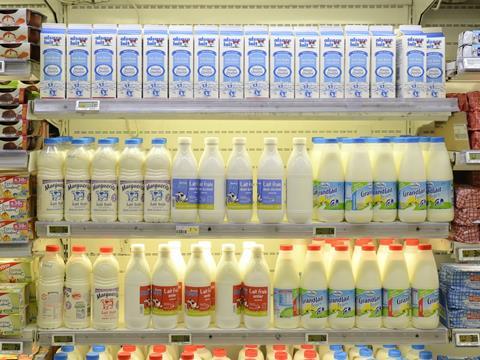
A new study has sought to discover whether the material used to package fluid milk has an impact on its flavour, suggesting that glass is the ideal barrier for flavour preservation and paperboard cartons can impact taste throughout the product’s shelf life.
Pasteurised skim and whole milk packaged in paperboard, glass, PET, LLDPE, and low- and high-density polyethylene were stored in the dark at 4°C and examined for their sensory and chemical properties on days zero, five, ten, and fifteen of the experiment, according to the abstract.
In general, the study concludes that the material used to package milk could influence its flavour – more so in skim milk than whole milk. Glass is upheld as the optimal material for preserving the flavour of fluid milk, although HDPE and PET are also identified as effective materials when storing milk in dark environments.
Conversely, paperboard cartons are thought to impact the freshness of the product due to flavour migration and scalping. Sensory analysis apparently detected the highest intensities of off-flavours in milk stored in paperboard and LLDPE packaging from day zero, which is attributed to permeability and migration.
By the fifth day, the study reports that the skim and whole milk packaged in cartons had taken on a ‘noticeable paperboard flavour’, with tests revealing lower levels of hexanal – a chemical compound used to produce artificial fruity flavours – in this form of packaging than the other materials. Increasing levels of refrigerator- or package-related compounds such as styrene, acetophenone, and 2-ethyl-1-hexanol were said to give skim milks packaged in paperboard cartons and LLDPE a ‘stale’ flavour in comparison with other packaging types.
On the other hand, consumers performing tetrad tests on the tenth day could not distinguish milks packaged in glass, PET, and HDPE post-processing. These results apparently aligned with the outcomes of the trained panel and volatile compound analysis, which did not identify sensory differences in high temperature short time (HTST) pasteurised milks stored in the absence of light in packaging made of the aforementioned materials. However, participants could reportedly discern milk stored in paperboard cartons from milk stored in glass.
Partial funding for the study was provided by the National Dairy Council based in Rosemont, Illinois.
CAP Environmental owner Jonathan Wragg voiced his disagreement with Morrisons’ decision to transition from HDPE milk bottles to cartons last year. In his opinion, the decision would only lead to downcycling that would disrupt a circular economy, and he accused the retailer of greenwashing to gain favour with its customers.
Thomas Körmendi, CEO of Elopak, takes a different stance on fibre-based milk cartons. He suggests that cartons can have anywhere between a 65% and 85% lower carbon footprint than PET alternatives and cites a 51% recycling rate for carton within Europe – a figure that can rise to 70% in some member states.











No comments yet